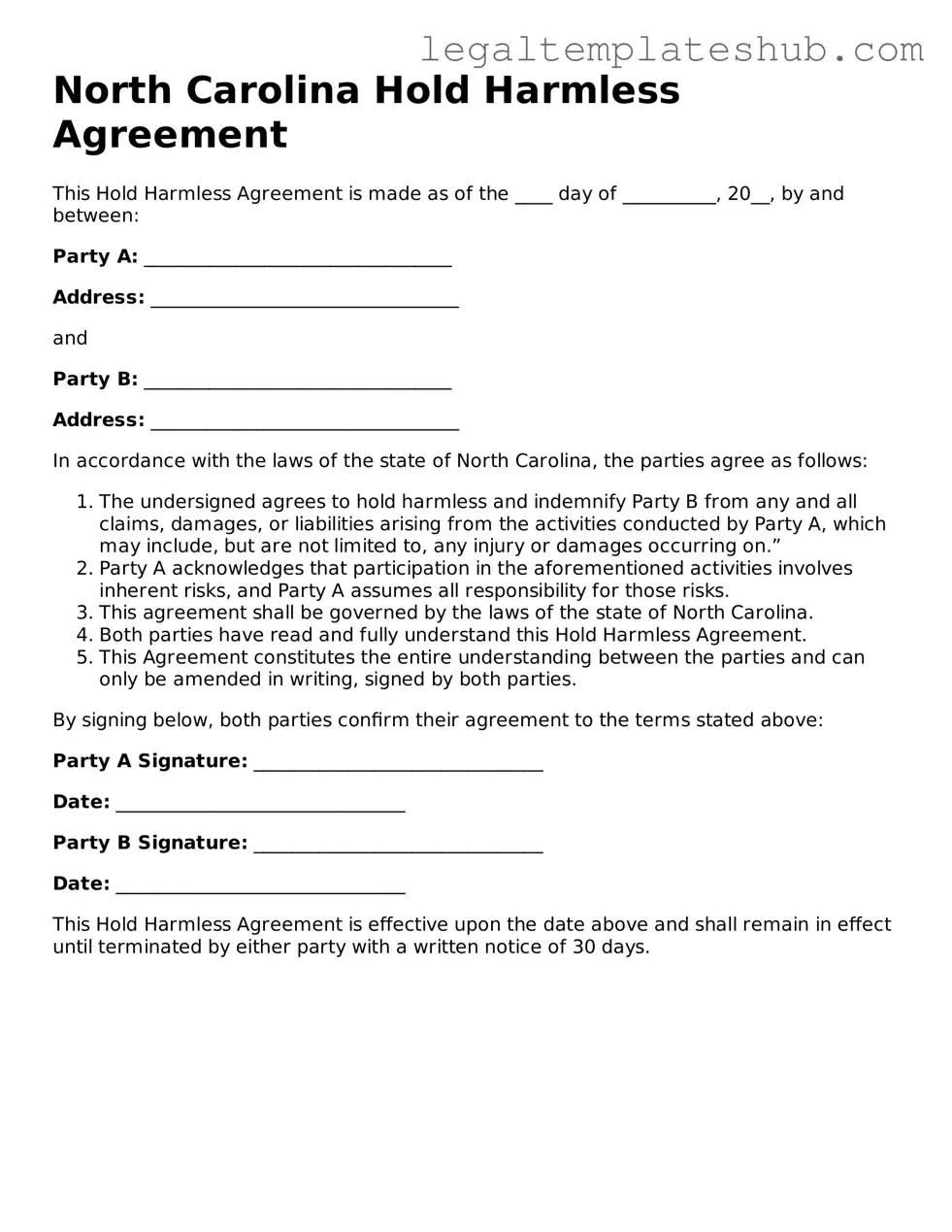Printable Hold Harmless Agreement Document for North Carolina
A North Carolina Hold Harmless Agreement is a legal document that protects one party from liability for damages or injuries that may occur during a specific activity or event. This form is commonly used in various situations, including rental agreements, construction projects, and events. It is essential for individuals and organizations to understand the implications of this agreement to ensure proper protection.
To fill out the North Carolina Hold Harmless Agreement form, click the button below.
Access Editor
